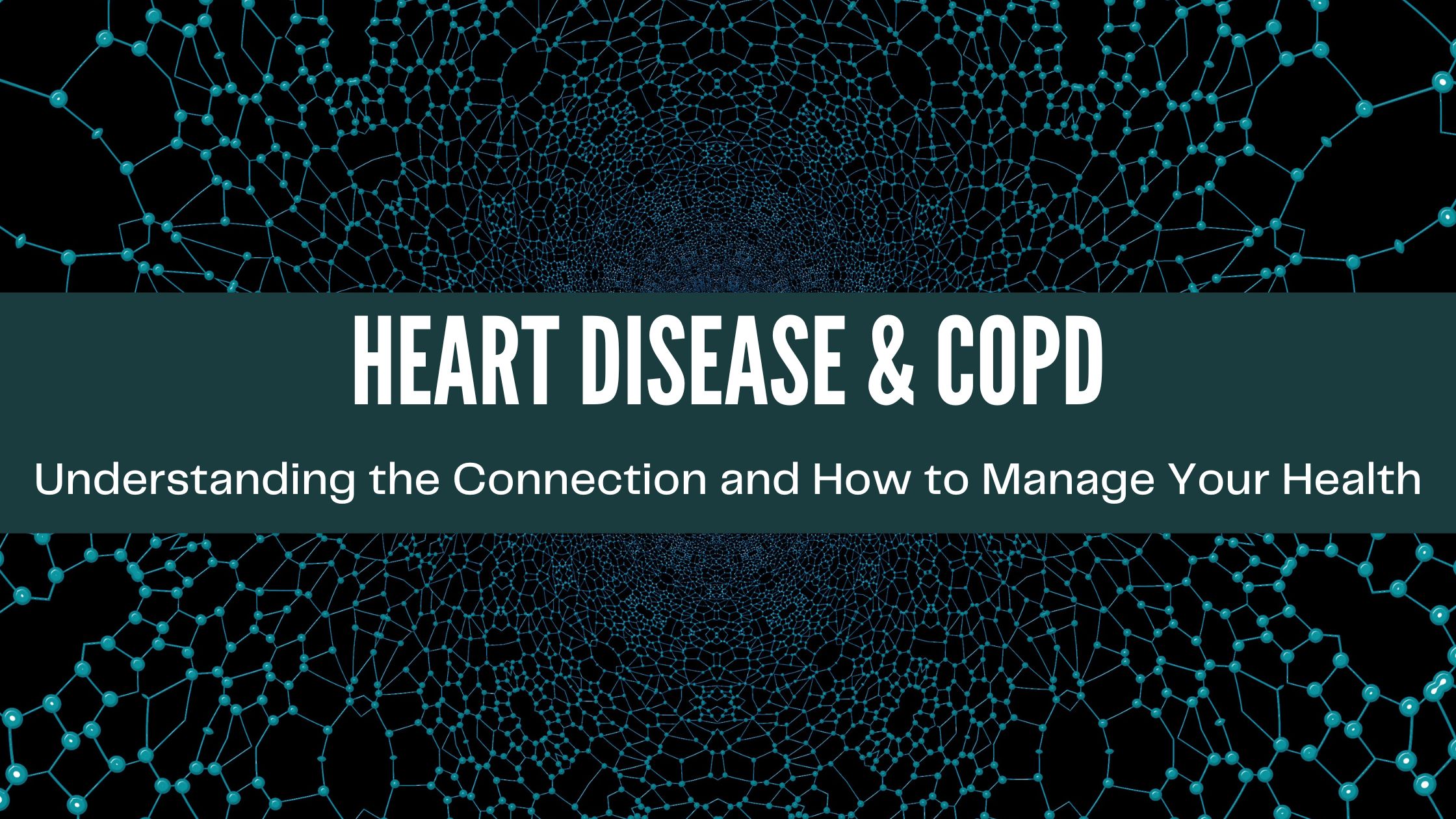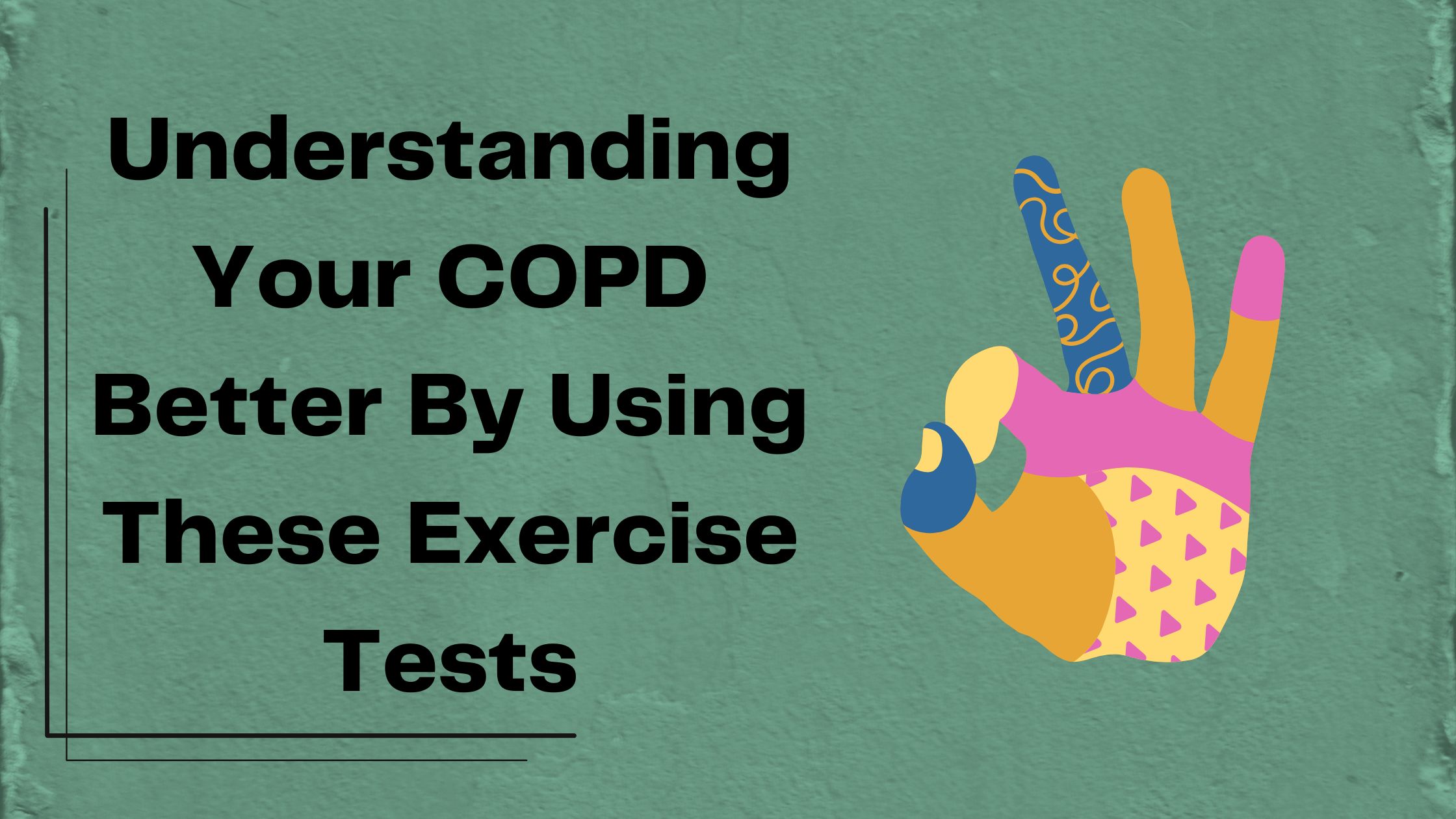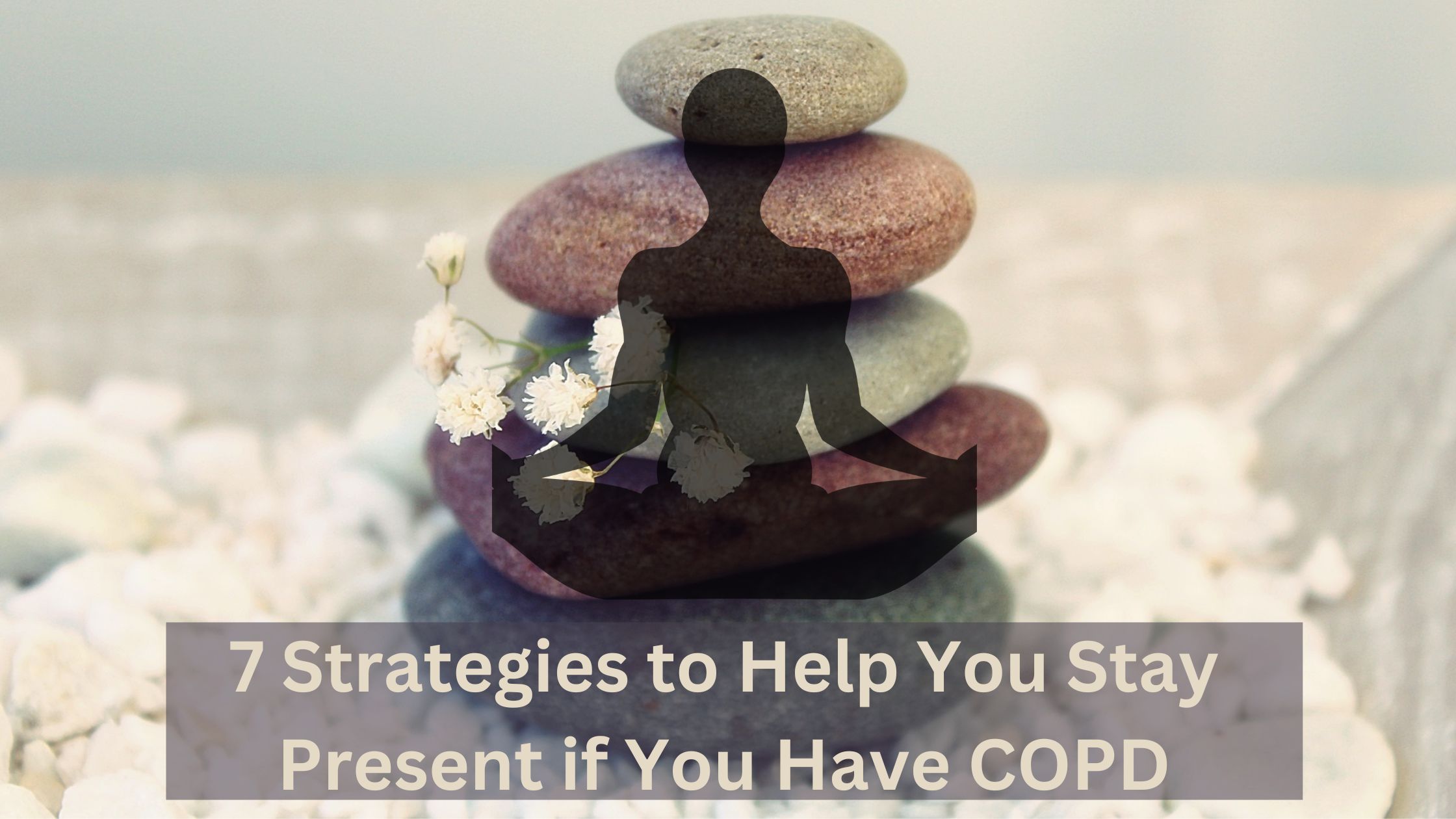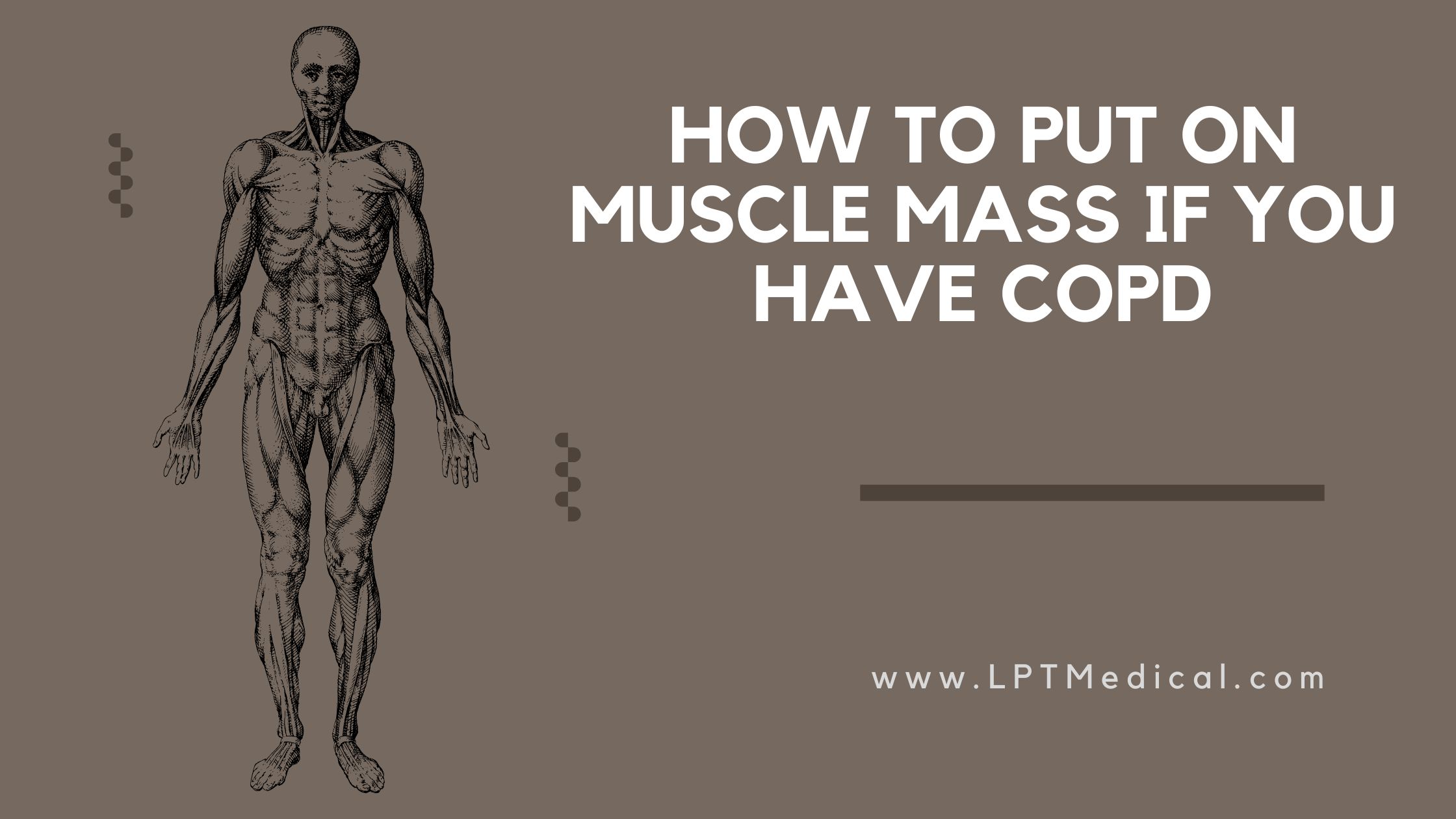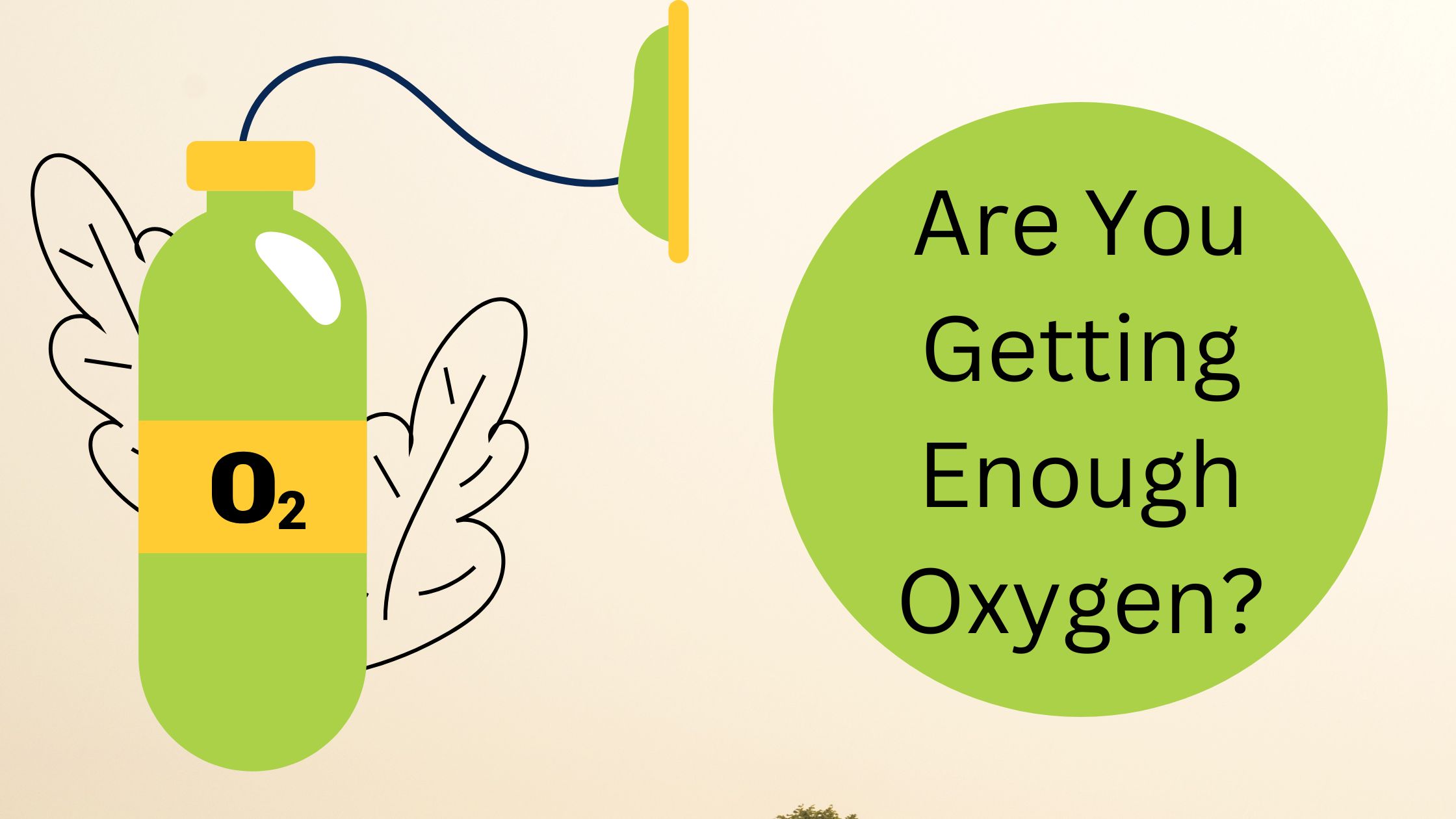
Spring Has Sprung: Don’t Let Your COPD Symptoms Take Over
Apr 13, 2023 4:27:36 PM / by Ana Eyssimont posted in Medication and Treatment, Tips and Hacks, wellness goals, ARYA Airvito Max
The ARYA P5 is An Advanced Portable Oxygen Concentrator That Will Help You Treat Any Respiratory Condition
Apr 6, 2023 10:42:43 AM / by Ana Eyssimont posted in oxygen therapy, wellness goals, COPD management, COPD Treatment, Arya portable oxygen concentrator, ARYA P5
Oxygen therapy has come a long way over the past few decades, and the ARYA P5 Portable Oxygen Concentrator from LPT Medical is a prime example of how advanced technology is helping people with respiratory issues live more active, healthy lives. In this blog post, we will explore the various ways that the ARYA P5 portable oxygen concentrator gives oxygen patients the freedom and independence they need to lead healthier lives.
Heart Disease and COPD: Understanding the Connection and How to Manage Your Health
Mar 21, 2023 3:10:43 PM / by Ana Eyssimont posted in wellness goals, COPD management, COPD Treatment
It's long been known that COPD and heart disease are related, and that heart disease disproportionately affects people with COPD. Researchers estimate that at least one-third of people with COPD suffer from coronary artery disease (the most common type of heart disease) and millions more suffer from other chronic heart conditions.
Unfortunately, heart disease and COPD can be a particularly difficult pair to manage, not only because they are both serious diseases, but also because they affect one another in a multitude of ways. COPD can make heart disease symptoms worse and visa-versa, which can make it exponentially harder to cope with both conditions at once.
Having heart disease can even affect your COPD treatment, including what medications you're prescribed and what kinds of lifestyle changes your doctor recommends. Heart disease also heightens your risk for a variety of COPD-related health complications and, if they occur, heart disease can make those complications much worse.
In this post, we're going to take a closer look at the relationship between chronic heart disease an COPD, and what it means for people who have both diseases. We'll also discuss strategies for managing the two conditions together, including how to reduce your symptoms and take good care of your heart and lungs.
We'll also discuss:
- Why people with COPD are more prone to heart disease (and why people with heart disease are more prone to COPD)
- How heart disease can affect lung function and worsen COPD
- How heart disease can affect COPD patients' hospitalization and mortality risks
- What kinds of additional health problems you should look out for if you have COPD and heart disease
- How to manage your COPD and heart disease medications and avoid dangerous drug interactions
- How to choose foods that boost your heart and lung health
- How to work with a multi-disciplinary treatment team to manage both diseases
- How quitting smoking can improve your heart disease and COPD
- How to make other healthy lifestyle choices to keep your heart and lungs as strong as possible
The Relationship Between COPD and Heart Disease
COPD and chronic heart disease are connected by a multitude of different factors that help to explain why so many people end up with both diseases. In the following sections, we'll examine how, why, and to what extent they are related, including how the diseases affect one another and how they affect your ability to breathe.
But before we go any further, it's worth taking a moment to define exactly what we mean when we talk about heart disease. After all, heart disease is a broad term that can be used to describe a wide variety of acute and chronic heart conditions, and only some of them are significantly related to COPD.
Defining Heart Disease
In the strictest medical sense, heart disease includes everything from rare congenital heart defects to heart attacks and (certain types of) cardiovascular diseases. Coronary artery disease is the most common type of heart disease, and the one that people most often associate with the term “heart disease.”
Throughout this guide, we will primarily discuss cardiovascular heart diseases, which are diseases involving both the blood vessels and the heart. In particular, we'll focus on two of the most common and serious heart diseases that affect people with COPD: coronary artery disease (also known as coronary heart disease or ischemic heat disease) and its more serious cousin, chronic heart failure (also known as congestive heart failure or simply heart failure).
Both of these diseases are strongly associated with other cardiovascular problems like high blood pressure, atherosclerosis, heart attacks, and stroke (which we will also discuss to a lesser extent throughout this guide). Chronic heart failure and coronary artery disease share many other characteristics as well, including similar symptoms, treatments, risk factors, and underlying causes.
More specifically, coronary artery disease (CAD) is caused by plaque buildup in the arteries that carry blood to the heart, which can happen as a result of many different factors, including age, lifestyle, genetics, smoking, and co-existing health problems. CAD is the most prevalent type of heart disease in the US by far, affecting more than 13 million adults, or 6.7 percent of the entire US population over 20 years old.
Coronary artery disease is the number one cause of chronic heart failure (CHF), which affects at least 5 million adults in the US. CHF occurs when the coronary arteries get so clogged up with plaque that bloodflow to the heart—and the rest of the body—becomes severely restricted.
Experts consider coronary artery disease and chronic heart failure to be two of the most important heart diseases affecting people with COPD. This is partially due to the fact that they affect such a large number of COPD patients, and partially because these diseases affect the respiratory system in several major ways (which we will discuss in more detail in the following sections).
How Common is Heart Disease in People with COPD?
Studies show that people with COPD are more prone than the general population to heart diseases and cardiovascular diseases in general. In fact, researchers estimate that people with COPD are two to five times more likely to have a cardiovascular disease compared to adults without COPD.
Though the exact numbers vary between different populations, studies have found that up to 33 percent of people with COPD have coronary artery disease and up to 24% have chronic heart failure.
These diseases are so common among COPD patients that studies suggest—as a whole—people with COPD are more likely to die from cardiovascular diseases than any other cause. This is only true for those who die with mild to moderate COPD, however; people with severe COPD are more likely to die from respiratory causes.
Why Are People with COPD More Prone to Heart Disease?
There are many potential reasons why people with COPD experience such high rates of heart and cardiovascular diseases. These reasons include cardiovascular damage caused by COPD directly, respiratory damage caused by heart disease, and separate outside factors that link the two diseases.
Shared Risk Factors
First, COPD and heart disease share many of the same risk factors, which means that many people who get COPD are already prone to getting heart disease. In other words, many of the same things that can increase your risk for COPD—including age, smoking, and unhealthy lifestyle choices—can also increase your risk for heart disease.
The reverse is true as well; people with heart disease tend to have risk factors that also put them at risk for COPD. As a result, people with heart disease are more likely to have COPD than people without heart disease.
Here is a list of the major common risk factors for heart disease and COPD:
- Smoking
- Older age (especially over 65 years old)
- Diabetes
- Obesity
- Exposure to air pollution
Cardiovascular Strain Caused by COPD
Other studies show that the relationship between COPD and cardiovascular disease runs much deeper than shared risk factors, and that COPD itself is a risk factor for heart disease. Even when controlling for other risk factors (like age and smoking), people with COPD still have a substantially increased risk for heart disease compared to people without COPD
This isn't surprising, since the heart and lungs are directly connected and because they heavily depend on one another to do their jobs. In fact, the cardiovascular and respiratory systems are so inter-dependent that they're often described as a single “cardio-respiratory” system.
Here's a quick primer to highlight how this system works: The lungs' main job is to supply oxygen to the bloodstream and get rid of carbon dioxide (an oxygen waste product) from the blood. The heart's job is to pump oxygen-rich blood away from the lungs to the rest of the body, and pump oxygen-poor blood back to the lungs so it can get replenished with oxygen again.
This is a carefully-coordinated process, and if either organ cannot keep up with the body's metabolism, the other has to pick up the slack. So when the lungs are struggling because of COPD (or another respiratory disease), it puts extra strain on the heart that can damage it—and your entire cardiovascular system—over time.
Low Oxygen Levels Caused by COPD
COPD-related cardiovascular damage is usually most evident in later, more serious stages of COPD, when the lungs can no longer function well enough to supply an adequate amount of to oxygen to the blood (a condition known as hypoxemia). To make up for the low oxygen levels, the heart has to pump harder and faster than usual to ensure that all of the body's organs and tissues can still get the oxygen they need.
This can lead to a variety of cardiovascular problems, including blood vessel inflammation, high blood pressure, and an increased risk for heart disease. Research suggests the risk is even higher for those with more severe lung function impairment; for example, studies have found a strong association between lower lung lung function scores and a higher risk of heart failure.
Low blood oxygen levels can also affect blood circulation in the lungs by damaging capillaries, constricting blood vessels, and restricting blood flow through the lung's tissues. This can cause high blood pressure in the lungs and the arteries that feed them, a condition known as pulmonary hypertension.
Pulmonary hypertension makes it harder for the heart to pump blood into the lungs and causes back-pressure on the heart that gradually weakens it over time. Eventually, this can lead to right-sided heart enlargement and a specific type of right-sided heart failure known as cor pulmonale.
Inflammation Caused by COPD
One of the main characteristics of COPD is inflammation in the lungs, but recent studies show that COPD can increase inflammation throughout the body as a whole (known as systemic inflammation). This includes inflammation in the blood vessels, which is a major characteristic of cardiovascular diseases like artherosclerosis and coronary artery disease.
While the relationship between inflammation and heart disease isn't totally clear, experts believe inflammation damages blood vessel walls and encourages plaque build-up in the arteries over time. This is likely one of the reasons—if not a primary reason—for the increased risk of cardiovascular disease among people with COPD.
How Does Heart Disease Affect People with COPD?
Just like COPD affects the heart, heart disease can affect the lungs, how well they can function, and your ability to breathe. Heart disease isn't likely to cause COPD if you don't already have it, but it can make COPD and its symptoms much worse.
As we've mentioned briefly already, both coronary artery disease and chronic heart failure impair the heart's ability to pump blood efficiently. This results in reduced bloodflow—and thus a reduced supply of oxygen—to the tissues all around the body.
This lack of oxygen forces the lungs to work harder in order to get more oxygen into the blood. This extra strain is especially hard for lungs affected by COPD to manage, since they are already damaged and already struggle to absorb oxygen efficiently.
Because the lungs have to work overtime to make up for the heart's poor performance, it takes less exertion to trigger trigger respiratory symptoms like shortness of breath. Over time, this can also increase the risk of complications related to poor cardio-respiratory function, including pulmonary hypertension (high blood pressure in the lungs), chronic hypoxemia (constantly low blood-oxygen levels), and cor pulmonale.
The Challenges of Managing Co-Occurring Heart Failure and COPD
Overlapping Symptoms
As we discussed earlier, heart and lung function are inextricably connected and both can significantly affect your ability to breath. As a result, heart and lung diseases cause many of the same major symptoms, particularly shortness of breath, low blood oxygen levels, and fatigue.
An unfortunate consequence of this is that chronic heart disease symptoms and COPD symptoms often overlap and compound with one another. Because of this, people with both diseases often have worse symptoms than those have either one of the diseases on its own.
This is most noticeable during physical exertion, which is the primary trigger for both heart disease and COPD symptoms. People with both conditions tend to get exhausted and oxygen-deprived faster, making it more difficult to tolerate physical activities or even do light tasks (like walking short distances) without feeling short of breath.
Difficulties with Diagnosis
Studies show that heart disease is severely under-recognized and under-diagnosed in COPD patients, while COPD is also under-recognized and under-diagnosed in people with heart disease. This is partially due to the fact that both diseases can cause nearly identical symptoms—namely shortness of with exertion, coughing, and fatigue.
Because of this, if you have one of the two diseases, it can mask the presence of the other. For example, a person with COPD is less likely to notice heart disease symptoms because they can easily “blend in” with the symptoms of COPD.
Even when heart disease does cause noticeable symptoms (like increased shortness of breath), it's often wrongly attributed to worsening COPD. As a result, COPD patients with heart disease symptoms are less likely to get tested for heart disease. In the same way, heart disease patients with breathing problems are less likely to get tested for COPD than people who have the same symptoms but don't have heart disease.
Because of this, a large percentage of people who have both COPD and heart disease get diagnosed with one condition but not the other. An estimated 17 percent of elderly adults with stable COPD have un-diagnosed chronic heart failure, while an estimated 20 percent of people with coronary artery disease have un-diagnosed COPD.
In recent years, experts have addressed this problem by advocating for more thorough disease screenings for people with heart disease and COPD. Unfortunately, extensive screenings are often expensive and time-consuming, making them difficult, impractical, or unappealing to many doctors and patients.
Treatment Quality
Studies show that people with COPD tend to receive less treatment for cardiovascular diseases than people without COPD. This is partially due the under-diagnosis of heart disease in COPD patients, but it remains true even for patients with diagnosed heart conditions.
For example, some studies show that COPD patients who are hospitalized for acute cardiovascular problems (e.g. heart attacks) are less likely to get testing or treatment for cardiovascular conditions. Some researchers believe that this poor quality of care is one of the reasons why people with COPD have an higher-than-average risk of death after being hospitalized for an acute cardiovascular event.
People with COPD and heart disease are also less likely to be prescribed beta-blockers (a standard medication used to treat heart disease) due to concerns about possible interactions with COPD medications. Though these concerns are most likely unfounded and the benefits of beta-blockers for heart disease are huge, many doctors still hesitate to prescribe them to patients with COPD.
Treatment Complexity
Experts have long been concerned that certain medications used to treat COPD may have negative effects on the heart and cardiovascular system that can make them dangerous for patients with COPD and heart disease. Having those medications be off-limits—or having to endure the elevated risk—can make it much more difficult to treat and manage COPD.
For example, oral steroid medications (such as prednisone) are a commonly prescribed to help COPD patients recover more quickly from COPD exacerbations. However, studies show that oral steroids can cause a range of adverse cardiac outcomes, including high blood pressure, high cholesterol, and an increased risk of heart failure.
This alone is enough to questions the safety of oral steroids in people with existing heart problems or high heart disease risk. Additional studies have confirmed this, finding that oral steroids (and possibly inhaled corticosteroids, too) can worsen heart disease symptoms, increasing fluid retention and shortness of breath.
Additionally, some COPD medications and heart disease medications have the potential to interact with one another, weakening or altering both medications' effects. Of particular concern are beta-agonists—a common class of medications used to treat COPD—and beta blockers, which are a common treatment for heart failure.
Both of these medications target similar receptors, which are found in both the heart and the lungs: beta-agonists activate the receptors, while beta-blockers reduce the receptors' activity. Because of this opposing action, experts have long worried that using beta-agonists and beta-blockers together could interfere with either one or both of the medication's effects.
However, this is much less of an issue since the advent of selective beta-blockers, which specifically target receptors in the heart. As a result, selective beta-blockers are less likely to interfere with beta-agonists, which are usually taken via methods (e.g. through an inhaler) that keep them mainly in the lungs.
Various studies on the topic have found no adverse effects—or even positive effects—of using selective beta-blockers in conjunction with inhaled beta-agonists. However, clinical guidelines and practice are slow to change, and many doctors still avoid prescribing beta blockers to people with COPD.
Worse Disease Complications
In general, people with COPD who also have heart disease have poorer health and more complications than COPD patients who don't have heart disease. This is partially due to overlapping symptoms as well as the strain that co-occurring heart disease and COPD puts on the cardio-respiratory system.
Research shows that coronary artery disease is associated with more COPD exacerbations, longer COPD exacerbations, and more hospitalizations among people with COPD. People with COPD and coronary artery disease also tend to have a lower exercise capacity—a major factor in overall health and quality of life—than those who only have COPD.
Other studies show that people with COPD are significantly more likely than those who don't to die or be re-hospitalized within a year after having a heart attack. This is in line with studies showing an increased risk for sudden cardiac death for people with COPD, which includes patients both with and without cardiovascular diseases.
Though they're not “complications” in the strictest sense, hospitalization and death are some of the most studied—and the most important—adverse events that can occur in patients with COPD and heart disease. We discuss the nuances of both of these topics in more detail in the sections just below.
Increased Risk of Hospitalization
People with COPD who also have heart disease are significantly more likely to be hospitalized than COPD patients without heart disease. The same is true with the conditions reversed; heart disease patients with COPD have a higher risk of being hospitalized than those who don't have COPD.
Studies even suggest that cardiovascular problems (and especially heart failure) are the leading cause of hospitalization among people with COPD, and that more COPD patients are hospitalized for cardiovascular problems than for respiratory problems. The US Lung Health Study, for instance, found that more than 40 percent of first-time hospitalizations among people with mild COPD were due to cardiovascular causes, while only 14 percent were directly related to COPD.
Cardiovascular disease is also associated with worse hospital outcomes in COPD patients, including longer hospital stays and a higher risk of needing to be hospitalized again within 30 days.
Increased Risk of Death
People with COPD have a higher risk of dying from heart disease (and related complications) compared to heart disease patients who don't have COPD. Moreover, research suggests that COPD patients with heart problems have a higher risk of death in general (including from COPD exacerbations) compared to COPD patients without co-existing heart diseases.
One study, for example, found that people who had coronary artery disease and COPD were more than twice as likely as those who only had COPD to die within the a three-year study period. COPD severity also plays a role, as research shows that the poorer lung function is associated with a higher risk of death from cardiovascular causes.
One large study found that COPD patients in the lowest lung function category were twice as likely to die from cardiovascular disease compared to those in the highest lung function category. Other research suggests that poor lung function accounts for about 25% of the mortality risk associated with coronary artery disease, with one study finding that a 10% decrease in FEV1 (a common lung function measurement) is associated with a 28 percent increased risk of death from cardiovascular disease.
There are many possible reasons for this phenomenon, including several we've already talked about, including: under-diagnosis, poorer cardiovascular treatment, and more severe COPD and cardiovascular complications. However, it's difficult to discern how much of a role each individual factor plays in the risk of death among COPD patients, especially because so many people with COPD have multiple co-occuring health conditions.
Tips for Managing Heart Disease and COPD
As we discussed at length already, treating heart disease at the same time as COPD can be a tricky business. And while there's been a great deal of research studying the link between heart disease and COPD, there is a striking lack of research on the best way to treat people with both diseases.
Fortunately, many studies do offer some insight on how to protect your heart from COPD-related damage and reduce heart disease symptoms in people with COPD. Combined with the massive amount of research on heart heath and heart disease treatment, we can distill several important strategies that people with COPD can use to better manage—an even improve—co-existing heart disease.
Be Extra Careful with Medications
If you have COPD and heart disease, medication adherence—or taking your medications correctly—is even more important than if you had either disease on its own. Because the diseases affect one another, properly treating both conditions is necessary to keep the symptoms of either disease under control.
For example, if you forget to take your COPD medication, it could put extra strain on your heart and lungs, resulting in increased symptoms from both diseases. Managing more than one chronic disease also means taking more medications in general, and having to take more medications means more room for problems and mistakes.
These mistakes can have serious consequences, especially since certain COPD and heart disease medications can interact with one another if you use them incorrectly. Poor medication management (e.g. skipping doses, taking medications at inconsistent times) can also make your symptoms worse and increase your risk for complications (e.g. quicker disease progression, hospitalization, and cardiac events).
To avoid making dangerous errors, you should learn all that you can about your prescribed medications and be extra careful about proper dosage, timing, and technique. This is especially important for COPD inhalers, which the vast majority of patients don't use right.
It's also vital to have a clear and thorough medication schedule as well as the discipline it takes to keep up with it consistently over time. This can be very difficult if you take a lot of different medications, which is why it's important to develop a reliable system to keep you on track.
You should also be careful to never take any over-the-counter medications without getting your doctor's “okay” first. Even medications that seem harmless (such as OTC sleep medications) can interact with prescription medications, impair your breathing, or have other negative effects on your heart or your lungs.
If you have any questions, concerns, or problems with your medications, don't be afraid to go to your doctor or pharmacist for help. Educating patients is part of their job, and most are happy to offer advice, clarification, and direct you to other helpful resources. All you have to do is ask!
For more info about how to use COPD medications correctly, your can find tons of helpful tips and resources in the following guides:
- 8 Drugs and medications that can worsen COPD
- How to take COPD medications correctly
- Tips for proper COPD inhaler use
Treat Exercise Like it's Your Lifeline (Because it Is!)
There are are many reasons why physical activity is important for your health, but one of the main purposes of exercise is is to keep your heart and lungs strong. This is important at all stages of life, but even more so in older adulthood, when the heart and lungs begin to wear down as a result of aging and disease.
Exercise is also an effective form of treatment for people who suffer from COPD, heart disease, or a combination of both conditions. In fact, it's downright critical for preserving cardio-respiratory function and maintaining a good quality of life with these either disease.
When you exercise regularly, it trains your entire cardio-respiratory system to work more efficiently, improving your blood circulation, reducing blood pressure, and strengthening the muscles you use to breathe. It also helps your body use up less oxygen when you're active, which improves your physical endurance and reduces the strain that physical activity puts on your heart and lungs.
All of this can reduce common COPD and heart disease symptoms and increase the threshold for what you can do without feeling breathless or fatigued. It also helps you build up bone and skeletal muscle strength, which is key for maintaining your mobility and independence for as long as possible, especially as you age and your chronic conditions get worse.
Here are some additional benefits of exercise for people with heart disease:
- Improved heart function and increased cardiac output
- Increased blood flow through the coronary arteries (vital for heart failure and coronary artery disease)
- Improved exercise capacity
- Reduced shortness of breath during exercise
- Reduced cholesterol levels
- Reduced risk of hospitalization
- Reduced risk of death
Here are some additional benefits of exercise for people with COPD:
- Reduced shortness of breath
- Reduced risk for COPD exacerbations
- Improved recovery from COPD exacerbations
- Reduced risk for hospitalizations
- Reduced anxiety and depression
- Improved exercise capacity
- Reduced risk of death
Unfortunately, heart disease and COPD both cause symptoms that make it difficult to exercise, which discourages many patients from sticking to a regular exercise routine. However, enduring the short-term discomfort of physical activity is more than worth it for the numerous, long-term benefits it brings.
In general, older adults should strive for a mixture of cardiovascular and strength-training exercises, adding up to a total of about 150 minutes (or 2.5 hours) of moderate physical activity per week. It's okay to start small with very light physical activities, such as simple chair exercises or walking.
The most important thing is to keep at it; then, you can work up to more steps or intensity gradually as you go.
This is easier if you can find activities that you actually enjoy doing and stick to a consistent weekly exercise routine. You can also get help from a physical therapist, physical trainer, or a rehabilitation program (such as cardiac rehabilitation, pulmonary rehabilitation, or combined cardio-pulmonary rehabilitation).
Of course, you should always talk to your doctor before making any major lifestyle changes, including starting a new exercise routine. This gives your doctor the chance to offer advice, refer you to helpful resources, and ensure that you choose activities that are safe and effective for you.
For more information about exercise guidelines, how to get started exercising, or how to overcome the obstacles of exercising with chronic disease, check out the following guides:
- Getting started with exercise for patients with heart failure (from the University of Iowa Hospitals & Clinics)
- How to improve your exercise tolerance with COPD
- How to exercise at home with minimal equipment and experience
- Learn about pulmonary rehabilitation, a program specially designed for people with COPD and heart disease
- How to do your own pulmonary rehabilitation program at home
- Ideas for fun physical activities and hobbies you can do with COPD
Commit to a Heart-Healthy Diet
It's easy to spend a lifetime putting off eating healthy, or ignoring healthy diet recommendations altogether. Unfortunately, that's something you just can't afford to do when you have serious, chronic health problems like heart disease and COPD.
Of the two conditions, heart disease is the most affected by what you eat. In fact, switching to a heart-healthy diet is one of the most effective ways to treat and slow down the progression of chronic heart disease.
COPD is also somewhat sensitive to your diet, even though (unlike heart disease) it's not exactly a diet-related condition. Still, what you eat—and how much you eat—can have noticeable effects on your COPD symptoms; eating fewer carbohydrates, for example, can noticeably improve your lung function and make it easier to breathe.
Eating a healthy diet also ensures that your body gets all the micro-nutrients (e.g. essential vitamins and minerals) that it needs to function. A poor diet, on the other hand, can lead to dangerous nutritional deficiencies that put extra strain on your already-weakened heart and lungs.
Diet is also key for maintaining a healthy BMI, which is critical part of treating both COPD and chronic heart diseases. Being underweight or overweight can affect your heart and lung function as well as increase your risk for serious complications like diabetes, heart attacks, and stroke.
It's important to note that, contrary to popular belief, you can still be undernourished even if you aren't underweight. Many people who are overweight or obese have micronutrient deficiencies, which is why you should always strive to eat a well-balanced, varied diet, no matter your BMI.
To learn more about what a healthy diet looks like, and how manage a healthy diet when you have a chronic disease, check out the following guides:
- Practical tips for a heart-healthy diet (from the American Heart Association)
- Healthy meal ideas for people with COPD
- 21 Healthy foods for people with COPD
- Foods you should NOT eat if you have COPD
Cooperate With Your Treatment Team
Chronic diseases like heart disease and COPD require a lot of specialized care including regular check-ups, medical tests, and dynamic disease management techniques. Over the course of your treatment, you'll likely work with a wide variety of different doctors and specialists, including respiratory therapists, cardiologists, dietitians, physical therapists, and, of course, your primary care doctor.
Together, these healthcare providers make up a multi-disciplinary treatment team that, together, can help you manage all the various aspects of your health. In many cases, the primary care doctor serves as the central coordinator for the team by synthesizing their findings and recommendations into a comprehensive treatment plan.
However, this system works best if you actively participant in your treatment, both during doctor's appointments and throughout your daily life. That means communicating with your doctors clearly by asking questions, sharing concerns, and giving your doctors accurate information about your health.
It also means adhering to treatment (e.g. taking your medications on time) and following all of your doctor's health and lifestyle recommendations. If you have any problems or run into any obstacles with treatment (such as difficulty sticking to a heart-healthy diet or exercise routine), it's important to take the initiative to bring it up with your doctor and work together to come up with solutions that work for you.
You should also pay close attention—and even take notes—during doctor's appointments so you can keep track of all the information and recommendations your doctors give you. Those notes are not only useful for your own personal reference, but they can also help you relay more accurate information to other members of your treatment team.
Finally, it's important to know how to advocate for yourself and your needs. Don't be afraid to speak up (or find a new doctor) if something doesn't seem right, and don't be afraid to ask for tests, referrals, and second opinions, even if your doctor doesn't bring it up first.
Keep in mind that not every COPD and heart failure patient needs a large team of specialists to manage their condition, especially if their health problems are mild or well-controlled. In some cases, especially if the disease is in the early stages, the primary care doctor will handle the bulk of disease monitoring and treatment on his own.
Quit Smoking!
Smoking tobacco has devastating effects on the cardio-respiratory system, which is why it's one the number one risk factors for both COPD and heart disease. Continuing to smoke after a COPD or heart disease diagnosis does further damage to the heart and lungs, worsening both diseases and making their symptoms more severe.
Smoking also puts you at an even greater risk for deadly cardiac events like heart attacks and stroke, which you are already more susceptible to if you have heart disease or COPD. It also significantly increases your risk for lung cancer, which is very common in COPD patients—in fact, lung cancer is one of the leading causes of death in people with mild to moderate COPD.
On the other hand, quitting smoking is an extremely effective way to improve both heart disease and COPD. It can improve your symptoms, reduce your risk for complications, and even slow down the pace at which both diseases get worse.
In fact, quitting smoking now (or as soon as possible) is one of the most important things you can do to improve your health and your overall quality of life if you are a smoker with COPD, heart disease, or (especially) both. It's also one of the best things you can do for your health in general and to protect yourself from of developing yet another of the many smoking-related disease (including diabetes multiple types of cancer).
Here is a summary of some of the major respiratory and cardiovascular benefits you can get if you stop smoking:
Cardiovascular Benefits
- Reduced risk of death from cardiovascular diseases
- Reduced risk of heart attacks and sudden cardiac death
- Improved cholesterol levels
- Slowed progression of artherosclerosis and related cardiovascular diseases (including coronary artery disease, heart failure, and peripheral artery disease)
- Reduced risk of death from stroke
Respiratory Benefits
- Slowed COPD progression
- Improved respiratory symptoms (e.g. coughing and shortness of breath)
- Reduced risk of respiratory infections (including pneumonia)
- Reduced risk of COPD flare-ups and exacerbations
It's also important to know that quitting is worth it no matter how long you've been a smoker; whether you've been smoking for 10 years or 50, you can still get a huge health benefits if you quit. Of course, quitting is never easy, but there is an endless supply of tools and resources available that can help you get started and aid you at every step of your journey to become and stay smoke-free.
If you're interested in quitting smoking or would simply like to learn more about the different quit-smoking programs, strategies, and tools, you can find a wealth of helpful information in the following guides:
- Resources to help you quit smoking
- How quit-smoking medications can help you quit
- How to take the first steps to quit smoking
Conclusion
If dealing with one chronic disease is difficult, living with two can be an incredible challenge. But even though managing COPD and heart disease is difficult—and research on co-treating the diseases is sparse—there are still many effective treatments and proven self-management techniques that can help.
Keep in mind that the heart health tips in this guide apply to everyone, even those who haven't yet been diagnosed with a heart or cardiovascular disease. Your heart is a vital organ that every part of your body depends on, and how well you take care of your heart at all stages of life can have a significant impact on how well your heart and lungs continue to function as you age.
There's a reason that living a heart healthy lifestyle is a major focus of medical studies, patient education, and public health campaigns. That reason is that it works, both for preventing heart diseases and for improving heart disease outcomes, both among heart disease patients in general and heart disease patients with COPD.
Understanding Your COPD Better By Using These Exercise Tests
Feb 22, 2023 6:44:20 PM / by Ana Eyssimont posted in wellness goals, COPD Treatment
Exercise tests are an effective way to not only measure physical strength and endurance, but also how well you can breathe. They can reveal vital information about your lung function, your oxygen levels, and your general physical abilities.
Reasons and Explanations Non-Smokers Might have COPD
Jan 26, 2023 2:25:41 PM / by Ana Eyssimont posted in COPD, wellness goals, COPD education
7 Strategies to Help You Stay Present if You Have COPD
Dec 27, 2022 1:57:24 PM / by Ana Eyssimont posted in COPD, wellness goals
A Resource Guide for COPD Patients who Struggle with Mental Health
Dec 1, 2022 12:08:03 PM / by Ana Eyssimont posted in wellness goals, COPD education, COPD management, COPD Treatment
COPD effects more than just your lungs and how well you can breath. It also influences your mental state causing irrational behavior or mood swings, and can even lead to depression and anxiety.
Simplify Shopping and Cooking with These 27 Tips and Tricks
Oct 27, 2022 10:42:16 AM / by Ana Eyssimont posted in COPD, Tips and Hacks, diet, wellness goals, COPD management
How to Put on Muscle Mass If You Have COPD
Oct 20, 2022 12:40:09 PM / by Ana Eyssimont posted in COPD, Tips and Hacks, wellness goals, COPD education, COPD management
Maintaining a healthy amount muscle mass is a constant struggle for many COPD patients, especially those in the later stages of the disease. COPD not only causes weight loss and loss of muscle mass, but it makes it more difficult to build muscle as well.
Are You Getting Enough Oxygen?
Sep 23, 2022 3:04:02 PM / by Ana Eyssimont posted in COPD, Medication and Treatment, Portable Oxygen, Tips and Hacks, G5 oxygen concentrators, wellness goals, COPD education, COPD management, Inogen One G5, COPD Treatment, Arya portable oxygen concentrator


.png)



